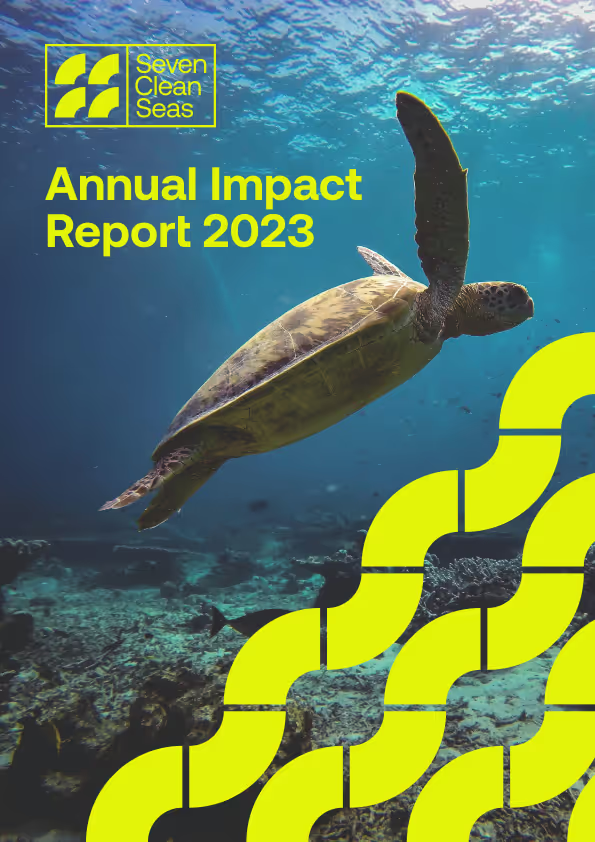In 2020, 380 million metric tonnes of plastic were produced, a 20-fold increase from 1960 and expected to double by 2040. Unfortunately, most plastic is not managed correctly. As a result, 95% of plastic packaging material value is lost to the economy, while 32% of plastic packaging escapes collection systems and enters the environment. Currently, 11 million tonnes of plastic are entering the ocean each year, and this figure is expected to increase to 29 million tonnes by 2040. Most of this waste (about 80%) originates from land-based sources- this means that once the plastic is disposed of, it is not managed well and ends up in the ocean. Of that 80% of the plastic that enters the ocean, 75% comes from uncollected waste, while the remaining 25% leaks from the waste management system (McKinsey, EMF, more). This plastic that leaks into the environment has enormous impacts on biodiversity and communities around the world.

Public-private partnerships and collaboration between countries are necessary to ensure appropriate funding, technology and expertise to manage and reduce waste from entering the oceans. Although fixing the waste infrastructure is essential, equally important is building a circular plastics economy that focuses on reducing virgin plastic use and recycling plastic to ensure the plastic that is already in our economy, continues in circulation and is not disposed of in the environment, landfill or incinerators. Companies can use this plastic issue and turn it to new business opportunities. The Ellen MacArthur Foundation indicates that shifting 20% of plastic packaging from single-use to reuse can be an innovation worth 10 billion USD (EMF, 2020). This plastic reduction will also address the actual problem of the plastic crisis, which is the growth and widespread use of plastic, therefore truly turning off the tap on plastic pollution. Although we know the adoption of a circular plastic economy and redesigning our entire system is going to be challenging, as the widespread use (and benefits) of plastic has not only allowed for economic development but also enabled to improve living conditions for so many (think of medicines, bottled water, food preservation, etc), it is a necessity as the problem now threatens our oceans and vulnerable communities.
So what exactly is the circular plastics economy?
The circular plastics economy is a systemic approach to the lifecycle of plastic materials, designed to keep them in use and out of the environment. It involves the redesign of the production and consumption of plastic materials, with the goal of reducing waste and pollution. In a circular plastics economy, plastic materials are collected, sorted, and recycled back into the production of new products, closing the loop and reducing the need for virgin plastic. This approach also includes the use of biodegradable and compostable plastics, which can break down in the environment rather than accumulating as waste. Adopting a circular plastics economy can help to reduce the environmental impact of plastic production and consumption, and can also create economic opportunities and drive innovation.
How can YOU reduce plastic and support the transition to a circular plastic economy?
Reducing plastic use requires upstream innovation and an entire shift in the way we think about plastics. We need to rethink the entire plastic system focusing on 1) the packaging (concept, format, component, material choices) 2) the product (product formulation, concept, shape, size) and 3) the business model (delivery model, supply chain, location of production, revenue systems).
At Seven Clean Seas, we know that change won’t happen overnight. Reducing plastic is a journey that requires long-term commitments (similar to carbon reductions).
Therefore, we aim to become your partners in this journey and support you in every step of the way. From measuring your plastic footprint all the way to communicating it to your employees and customers. Some of our reduction services are:
1. Strategy development: We work with your sustainability team (or whoever is responsible for it) to create a plan for your plastic reduction. We can help you set short and long-term targets, identify relevant KPIs to measure your progress and ensure alignment of all the relevant stakeholders that will support your plastic reduction ambitions.
2. Identification of solutions: We can also help you identify different solutions for reducing plastic, including finding alternative materials, increasing recycled content of your products, redesignign the products and/or business and model and more. We provide tailored solutions to your situation, so if your goal is to reduce plastic from your products, offices and supply chain, we are here to help!
3. Stakeholder engagement: Finally, as you probably have seen in our other services (Engagement), reducing plastic is not a one-man’s job. It requires the collaboration of multiple stakeholders and we help you communicate with them to ensure alignment. This can include- for example- contacting your suppliers and finding opportunities to reduce yoru plastic along your supply chain.
















